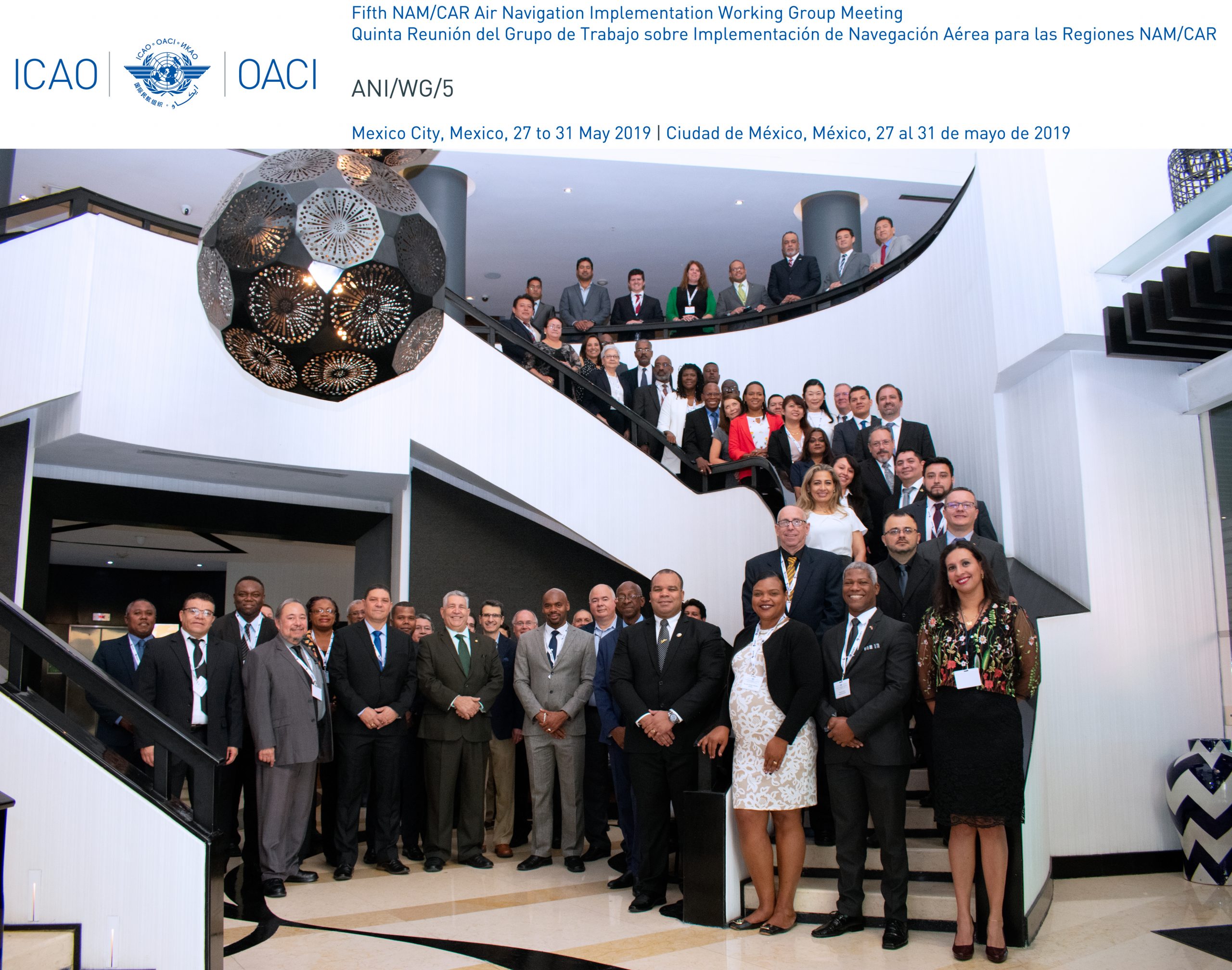En representación de COCESNA estuvieron participando el Ing. Ernest Arzú, Subdirector de la Agencia Centroamericana de Navegación Aérea-ACNA y el ATC Víctor Manuel Andrade, Gerente Operativo, en la Quinta Reunión del Grupo de Trabajo sobre implementación de Navegación Aérea para las Regiones NAM/CAR (ANI/WG/5), se llevó a cabo en el Hotel Le Meridien, Ciudad de México, México, del 27 al 31 de mayo de 2019.
La reunión ANI/WG/5 dio seguimiento a los acuerdos alcanzados en las áreas ATM, AIM y CNS por la Cuarta Reunión del Grupo de Trabajo sobre Implementación de Navegación Aérea para las Regiones NAM/CAR (ANI/WG/4) y los objetivos y prioridades del Plan Regional NAM/CAR de Implementación de Navegación Aérea Basado en la Performance (RPBANIP), analizando el avance de la implementación por cada Estado/Organización Internacional de las Regiones NAM/CAR y los trabajos logrados por los Grupos de Tarea del ANI/WG (ANI/WG TF), e identificando los beneficios resultantes de estas implementaciones.
La amplia agenda discutida en esa importante Reunión fue:
- Revisión y aprobación del Orden del Día, método de trabajo y horario de la Reunión;
- Revisión y seguimiento a las Conclusiones/Decisiones válidas de las Reuniones ANI/WG/04, NACC/WG/05 y GREPECAS/18 ;
2.1 Seguimiento y evaluación de desempeño y monitoreo del Plan Regional NAM/CAR de Implementación de Navegación Aérea Basado en la Performance (RPBANIP);
2.1.1 Informes de avance de los Grupos de Tarea del ANI/WG. Estado de Implementación de los Estados;
2.1.2 Informe de avance por los Estados de los módulos B0 y B1 de las Mejoras por bloques del sistema de aviación (ASBU);
2.1.3 Información AGA, MET y SAR;
2.2 Deficiencias, Retos y Objetivos Regionales;
3 Desarrollos Mundiales y Regionales de Navegación Aérea;
3.1 Avance del Plan de Navegación Aérea electrónico (eANP) regional y la nueva versión 4.0 del Plan de Implementación de Navegación Aérea Basado en la Performance para la Región CAR (RPBANIP);
3.2 Resultados del Proyecto RLA 09‐801 — Programa de Asistencia Multi ‐ Regional para la Aviación Civil (MCAAP);
3.3 Otros Desarrollos de Navegación Aérea Mundial y Regional;
4 Participación, Conferencias y Presentaciones de la Industria;
4.1 Facilidades para la implementación del manejo de Información y datos Aeronáuticos (Gestión de la Información Aeronáutica (AIM), Toma de Decisiones en Colaboración (CDM), Gestión de Afluencia del Tránsito Aéreo (ATFM), Gestión de la Información de Todo el Sistema (SWIM), Meteorología Aeronáutica (MET));
4.2 Impulso del desarrollo de la infraestructura de Comunicación, Navegación y Vigilancia (CNS)(radares, Sistemas Vigilancia Dependiente Automática ‐ Radiodifusión (ADS‐B), sistemas de Navegación Aérea, GNSS, Sistemas de radio comunicación y sistemas de comunicación de Servicios de Tránsito Aéreo (ATS), Sistemas de Grabación de datos, Sistemas de Tratamiento de Mensajes de los ATS (AMHS), otros); y
4.3 Facilidades ATS, sistemas de torre, aproximación, ruta, etc. 4.4 Sistemas de apoyo a la operación de los aeropuertos.












